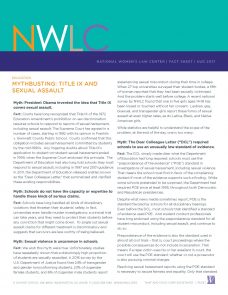Resources Library:
Start a Search:
National Immigrant Family Violence Institute
The National Immigrant Family Violence Institute is dedicated to eliminating domestic violence in immigrant communities. They provide individualized technical assistance and training, as well as specialized resource materials on the unique issues faced by immigrant communities in combating domestic violence.
National Latino Alliance for the Elimination of Domestic Violence (Alianza)
National Latino Alliance for the Elimination of Domestic Violence (Alianza) was established as one of three domestic violence “Cultural Institutes” to address the particular needs and concerns of communities of color experiencing family violence. Alianza specifically addresses the needs of Latino/a families and communities, although its work helps to inform the domestic violence field in general. Alianza’s work has been in four main areas: community education, policy advocacy, research, and training and technical assistance. It has grown into a national network of Latina and Latino advocates, practitioners, researchers, activists, and survivors of domestic violence.
National Resource Center on Domestic Violence
Since 1993 the National Resource Center on Domestic Violence (NRCDV) has been a comprehensive source of information for those wanting to educate themselves and help others on the many issues related to domestic violence.
National Sexual Violence Resource Center
The National Sexual Violence Resource Center (NSVRC) opened in July 2000 as a national information and resource hub relating to all aspects of sexual violence. The NSVRC staff collects and disseminates a wide range of resources on sexual violence including statistics, research, position statements, statutes, training curricula, prevention initiatives and program information.
National Women’s Law Center - Mythbusting Title IX and Sexual Assault

Nearly one in five undergraduate women experience sexual assault or attempted sexual assault while in college, as do too many men and gender non-conforming students. Title IX of the 1972 Education Amendments requires that schools prevent and respond to reports of sexual harassment, including rape, to ensure survivors can continue to learn in the wake of violence. Despite significant evidence to the contrary, some critics argue that survivors of sexual misconduct on college campuses have too many rights. Myths like these are inconsistent with the law and ignore the real experiences of students subjected to sexual harassment. Below are other myths and facts about sexual assault and Title IX.

